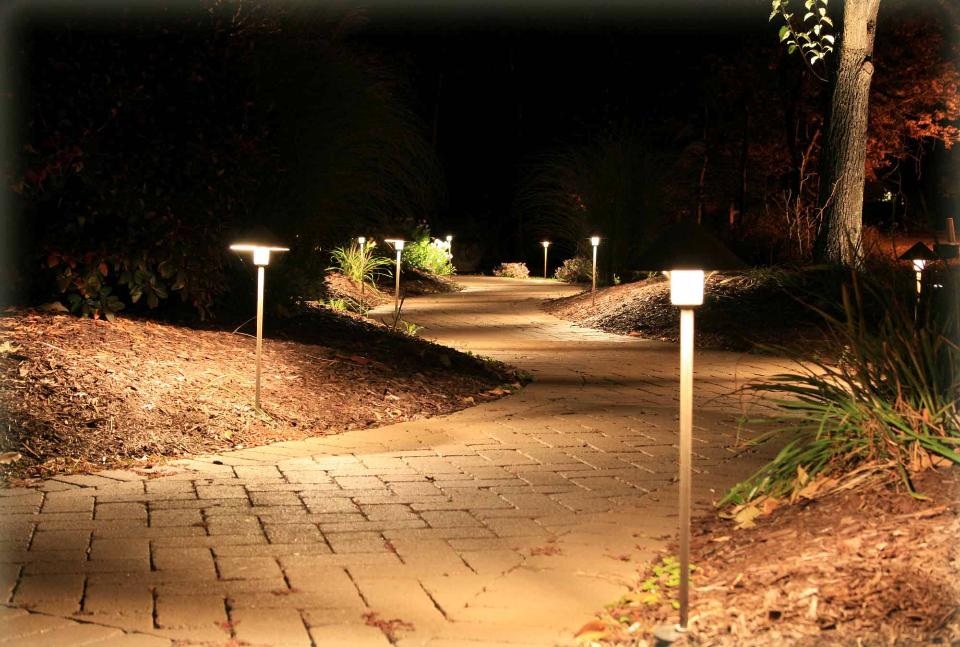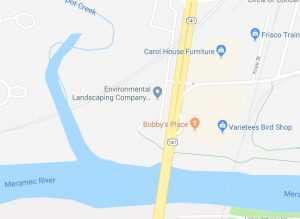Providing Low Voltage Installations St. Louis Residents Can Count On
Expert Low Voltage Installations St. Louis Residents Can Rely On
9 Things You Should Know About Low Voltage Lighting, one of the most popular landscaping projects in the St. Louis metro area.
1. What Does “Low Voltage” Mean?
A low voltage lighting system usually operates on 12 or 24 volts whereas a line voltage system usually operates on 120 or 277 volts. Examples include recessed lights (cans), track lights, bendable rail lighting systems, landscape lighting, deck lighting, suspended cable lighting, pendant lights, and display lights.
2. Transformer
A transformer is for most outdoor lighting systems to “transform” the higher standard line voltage to either 12 or 24 volts. Without a transformer the light bulbs in the circuit would be subjected to 120V or more and would burn out immediately. The transformer may be part of the fixture (integral) or located outside the fixture (external transformer). There are two types of transformers used in a low voltage lighting system, electronic or magnetic.
3. Maximum and Minimum Wattage
The wattage rating of a 12v transformer should always be equal to or greater than the total wattage of the lighting system. If an electronic transformer is used, then the maximum wattage of the lighting system should never exceed the wattage rating of the transformer. If, however, a conventional EI magnetic transformer is used, then the maximum wattage of the lighting system should not exceed 80% of the transformer’s wattage rating. This type of magnetic transformer gets its name from the stacks of E-shaped steel sheets capped with I-shaped pieces in its laminated core. An EI magnetic transformer is a bit less expensive to produce but creates additional loss which is why the maximum wattage should not exceed 80%.
Transformers usually have a minimum wattage before they work. It’s not uncommon for a 60-watt electronic transformer to require at least 10 watts of lighting load. If only 5 watts of lighting load connected, the lighting system will not work. An electronic transformer is generally lighter in weight, smaller in size, cooler to operate, and quieter than a magnetic transformer, making it a good choice for indoor low voltage lighting systems. However, they can only provide up to 300 watts of power whereas some magnetic transformers can provide as much as 1200 watts.
4. AC Electronic Transformer Placement Recommendations
AC (alternating current) electronic transformers shouldn’t be any farther than 10 feet from the low voltage lighting system. Further than that, and the system will experience a lower voltage (‘voltage drop’) and have dimmer lamps. Also, the longer the distance between the transformer and the lighting system, the greater the chance that it might create radio frequency interference (RFI) with other electronic components in the area.
5. Wiring the Transformer
A low voltage transformer usually has 4 connections or 4 wires attached to it. Occasionally, it may also have a green wire that should be attached to “ground”. Remember that the power should always be turned off before making any electrical connections. The primary side of a transformer is often labeled “Input” and is made up of one black wire and one white wire for the incoming line voltage. Always connect the white wire of the transformer to the white wire (neutral wire) of the incoming line voltage and the black wire of the transformer to the black wire (hot wire) of the incoming line voltage. The secondary side of a transformer is often labeled “Output” and is made up of two similarly colored wires (often two red or two blue wires) and they will supply power to the low voltage circuit. The polarity of these wires is not important; that is, either wire of the secondary side of the transformer may be connected to either wire of the low voltage circuit.
6. Wiring a Dimmer
A low voltage light fixture can be dimmed or controlled whether it is powered by a magnetic or electronic transformer. When using control devices like a dimmer (or an on/off switch or an occupancy sensor or a timer) it should always be installed so that it is controlling the line voltage side (primary or input side) of the transformer. Both electronic and magnetic transformers require dimmers that are specifically designed to control that type of transformer. Always make sure the dimmer you choose is compatible with its transformer type.
7. Connections Must Be Tight
All of the electrical connections in the secondary circuit of a low voltage lighting system must be very tight and secure. If an electrical splice is loose the wires may arc, create a great deal of heat, cause the entire lighting system to fail, and possibly catch fire!. If the transformer is an external transformer and not integral within the light fixture, it (along with its splices) should be safely housed in a UL-approved junction box. Also, the light bulbs in a low voltage lighting kit should always be wired in parallel, not in series, so that each one is powered by 12 or 24 volts.
8. Using the Right 24-Volt Lamps
When using a 24-volt transformer always make certain that the lamps are also rated for 24 volts and not 12 volts. If 12-volt lamps are used with a 24V transformer they will burn out immediately, and could even become a fire hazard!
9. You Need Thicker Wires
The low voltage lighting circuits on the secondary (output) side of transformers require thicker wires since they are transferring more electricity. For example, a 300-watt lighting system operating at 12 volts uses 25 amps of electricity on the low voltage side of the transformer, where this same transformer may be powered by 120 volts and have only 2.5 amps of electricity on the line voltage side of the transformer. For safety, we recommend that if the low voltage circuit is carrying as much as 25 amps of current, the wire should be rated for 30 amps. This fail-safe prevents the wire from over-heating.
At Environmental Landscaping, we are some of the areas foremost experts in landscape design and implementation, specializing in plant installations, walkways and patios, decks, gazebos and arbors, water features and more, including a wealth of experience installing low voltage lighting in St. Louis and the surrounding region. From Ballwin to Oakville, Wildwood to Maplwood, Kirkwood and Webster, and everywhere in between – we are your St. Louis landscaper of choice.
Call us today at (636) 225-3848 or contact us via email at tc@envlandscaping.com today to learn more about your landscape lighting options.
We look forward to hearing from you soon,
Tory Catanzaro
Also – Book your project from now until November 15th, and don’t pay anything until next year. See homepage for more details.









